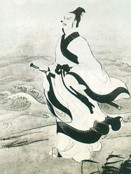 | How does Dragon Boat Racing come into being?
Contemporary folk tradition commonly attributes dragon boating racing's origins to the saving of a drowning folk hero in the 4th century BCE, Qu Yuan. He was a loyal minister serving the King of Chu during the Warring States Period. Initially his sovereign favored Qu Yuan, but over time, his wisdom and erudite ways antagonized other court officials. As a result Qu Yuan was accused of trumped-up charges of conspiracy and was rejected by his sovereign. In the year 278 BCE, at the age of 37, Qu Yuan drowned himself in the Milo River.
|